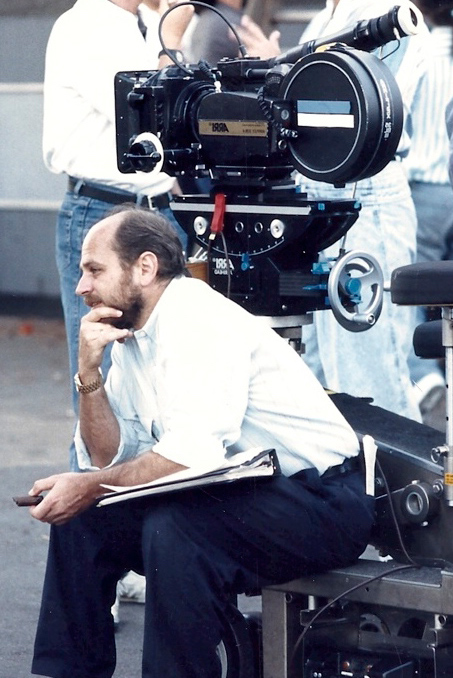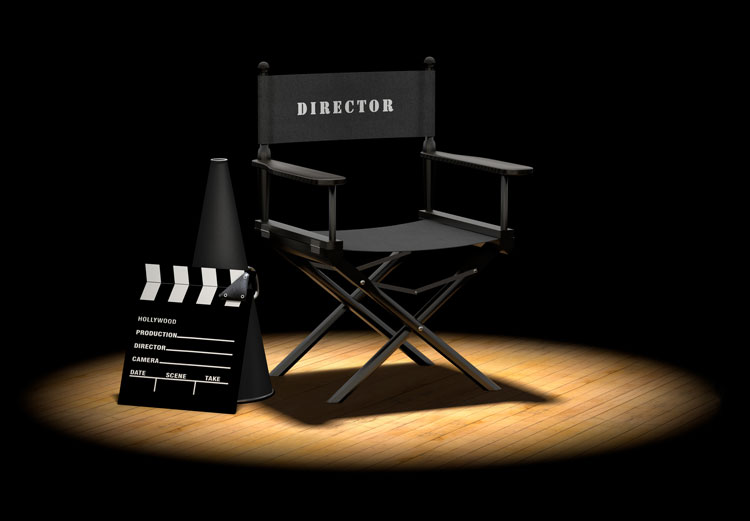Blog
Film Review by Eric Sherman

As a distinguished Hollywood film director and producer, Mr. Eric Sherman is uniquely qualified to analyze both the film and the subject of Alex Gibney’s movie on Scientology. Mr. Sherman has been making films since 1967. He co-founded the Yale Film Society and graduated as Yale’s first Scholar of the House in film, an honors program for independent study. He won the Peabody Award for producing and directing the PBS series “Futures with Jaime Escalante” and some 100 other awards for his fiction and nonfiction films. He has authored four widely used texts on directing and has lectured on directing and filmmaking at numerous universities. Mr. Sherman clearly doesn’t give Alex Gibney a passing grade.
I recently watched Gibney’s film from the viewpoint of a filmmaker. These are my informal notes from that viewing, comments and observations on various technical and ethical issues.
- A documentary about Scientology but almost nothing about Scientology in the film?? NO interview of any Scientologist??
- Beginning of the film, Lawrence Wright [film’s co-producer and author of the book the film is based on] says “My goal was to understand Scientology, what people get out of it.” Sounds good, sounds right, what any viewer would expect. But it never comes. Film never addresses this. Doesn’t ask the question, doesn’t answer it.
- Big item of interest to viewer: Want to hear from Scientologists why they are Scientologists, what it means to them and does for them. People are interested in other people’s religions. But no Scientologists in the film. The film never asks any Scientologist anything. Only critics.
- Film’s title is loaded, suggests a person’s beliefs can trap them. Skews the film right from the start. Expects audience to buy this premise but then shows nothing to support it. Ex-members and other detractors not convincing to viewer. Viewer perceives immediately that this is a one-sided view, makes viewer skeptical of filmmaker’s motives.
- BIG PROBLEM WITH FILM: Shows nothing about the religion at all. What do Scientologists believe, what are their religious practices, why they are active in their religion when organized religion is declining across the boards for many denominations. Basic questions anyone viewing a film about any religion would expect to be answered in a documentary about the religion. Not addressed in this film at all.
- BIG PROBLEM WITH FILM: Utterly one-sided, leaving viewer perplexed rather than convinced of anything. Two hours of detractors ranting about the Church and its leadership, with no counterpoint, no positives, no statistics. Causes rejection of the film because it’s so transparently one-sided. Causes suspicion about why not anything from the Scientology side of the picture and why is the filmmaker so obsessively anti-Scientology?
- Gibney’s film is most definitely not a documentary. It is a propaganda piece and should be labeled as such—“docuganda,” as attack pieces are called when they masquerade as documentaries. Barry Hampe [documentary maker and author of books on same] has written, “Today, partisan filmmakers are using the form of the documentary to do a hatchet job on people and things they don’t like, winning applause from all those who agree with them.
- Hampe also says: “…[T]here are filmmakers willing to use the form of the documentary without regard for the truth in order to present their own one-sided, biased or partisan views. When people calling themselves documentarians believe their mission is more important than the truth, we all suffer.”
- Hampe also writes: “What makes docuganda not documentary is its blatant one-sidedness.”
Here are some key definitions I teach film students in my classes:
- Definition of documentary: “A nonfictional motion picture intended to document some aspect of reality, primarily for the purpose of instruction or maintaining a historical record.” Gibney’s film fails on all points:
- “Nonfiction”: Requires that it’s “backed up by fact, by additional testimony, by incontrovertible information.” Typical method is utilizing statements on same or similar statement or question by those with opposing views. Given the extreme allegations in the film, viewer yearns for the “other side,” some measure of balance. Viewer is extremely uncomfortable when offered nothing with which to judge, not even point-counterpoint to enable him to formulate his own view.
- “Intended to document”: To document means to record. A record of the workings of a group would include some plus-side observations by members or even outsiders who know the group. There are none. The only images of actual Scientology “at work” are clips from films taken by Scientologists at commemorative events. Obviously meant for internal viewing, and likely used without permission.
- “Primarily for the purpose of instruction”: No intent to instruct anyone about anything in this film. No intent to inform or illuminate. The Church has made dozens of instructional films and videos but nothing from them here.
- “Maintaining a historical record”: History would be information backed by multiple and corroborating sources. Nothing like that here. Lots of assertions and allegations, but no evidence of any of them. Lots of old material told in “same old, same old” way.
- Dubious sources. No “clean sources.” Not credible sources because they are disgruntled ex-members and gone from the Church for years so no current knowledge of the Church. Other sources are professional critics with no knowledge or experience in the religion at all.
- No interviews with Scientology staff, but a lot of allegations that are ludicrous.
- No current stills or footage shot inside actual Churches. Gibney said in a TV interview in recent months that he did not request access. Normally the first thing a documentary maker does is request access. Why didn’t he ask?
- Gibney uses recreated scenes in his film and does not clearly label them as reenactments. This is dishonest and confuses the viewer, denying them the clear distinction between reality and recreation. If a filmmaker is going to stage an event, he had better say so.
- There are many “cheap shots” in the film that give very false impressions and would never be used by a filmmaker with integrity: The shaky hand-held footage is dull and uninventive. This style went out with the 1960s. The “shock cut” to a running guard is amateurish and is really stretching to create an impact. A close-up of ants crawling around, a close-up of a tongue licking a floor, one of the sources being led away by police—all give a totally false impression with no context for the viewer.
Final grade? Well, you get the idea.
